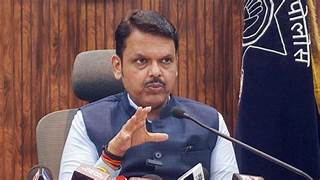Maharashtra is lighting up farms with solar energy. On April 25, 2025, Chief Minister Devendra Fadnavis announced the completion of 1,359 MW of solar power projects. This has brought daytime electricity to over 2 lakh farmers. It’s a big win for agriculture and clean energy. Here’s what’s happening and why it’s important.
Solar Boost for Farmers
The state has finished solar projects generating 1,359 MW. This powers agricultural pumps during the day, when farmers need it most. “Solar power generation projects with a capacity of 1,359 MW were completed in the state, due to which 2.14 lakh farmers started getting daytime power supply,” Fadnavis said. The Mukhyamantri Saur Krishi Vahini Yojana 2.0 (MSKVY 2.0) drove this effort, aiming for a massive 16,000 MW capacity by 2026.
Why Daytime Power?
Farmers often need electricity for irrigation during the day. Before, many got power in two shifts—day and night—which wasn’t ideal. MSKVY 2.0 ensures daytime supply, making farming easier. “This scheme will meet the farmers’ demand for only daytime power supply to pumps,” a Times of India report noted. It’s the world’s largest decentralized solar project, showing Maharashtra’s commitment to green energy.
Key Highlights
- Solar Capacity: 1,359 MW completed.
- Farmers Benefited: 2.14 lakh now get daytime power.
- Future Goal: 16,000 MW by 2026 under MSKVY 2.0.
- Impact: World’s largest decentralized solar project.
How It Helps
Solar power cuts reliance on diesel pumps, saving farmers money. It also reduces emissions, supporting India’s net-zero goals. A Fenice Energy blog from 2024 says MSKVY 2.0 aims to add 8,000 MW to Maharashtra’s solar capacity, helping farmers irrigate reliably. The state’s rich farming history and large lands make it perfect for solar innovation, turning farmers into “energy providers.”
Challenges Ahead
Scaling to 16,000 MW won’t be simple. Land acquisition, funding, and grid integration can be tricky. Plus, maintaining solar panels in rural areas needs planning. But Maharashtra’s government is on it. Fadnavis praised the Energy Department, District Collectors, and officers for their work on MSKVY 2.0.
The Bigger Picture
Maharashtra is a leader in India’s renewable energy push. The state ranks high for solar installations, adding 8% of India’s 25.2 GW in 2024, per a Mercom report. Solar farming aligns with India’s 450 GW renewable target by 2030. A Wikipedia entry on solar power in India notes that agro-photovoltaics—like in Maharashtra—lets farmers generate electricity without losing crop space. This dual use is key for sustainability.
Maharashtra’s 1,359 MW solar projects are a bright spot for farmers. With 2.14 lakh now powered during the day, and 16,000 MW on the horizon, the state is sowing the seeds for a greener future. It’s a model other regions might follow.

